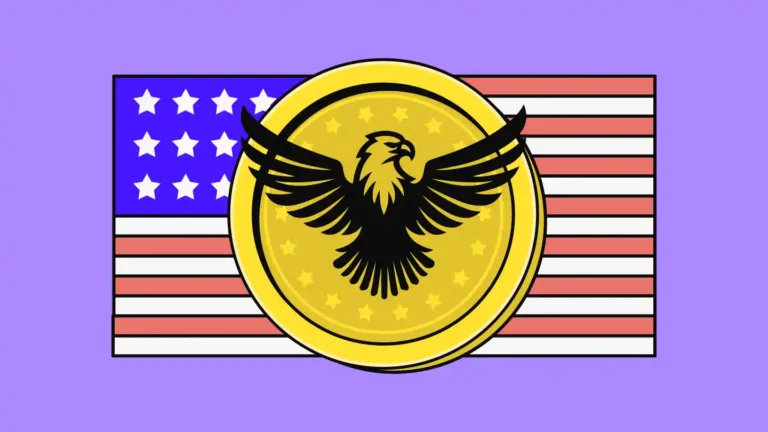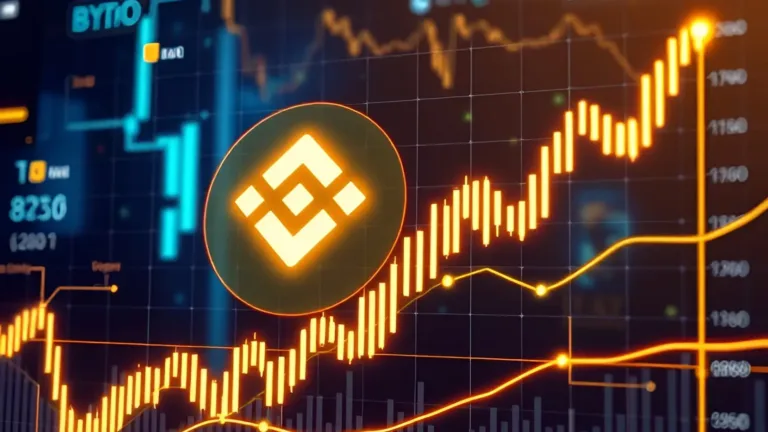USDC Price Prediction for 2050
As the world of cryptocurrencies and financial technology rapidly evolves, stablecoins like USD Coin (USDC) have become the cornerstone of a more reliable and resilient digital economy.
But USDC isn’t just another digital token—it’s a direct digital representation of the US dollar, fully backed by real-world reserves and governed through a system designed for transparency and trust.
That raises a crucial question: Can USDC maintain its dollar peg all the way to 2050? How will it navigate the uncertain waters of global regulation, technological disruption, and macroeconomic shifts?
Principal Conclusions
Hide-
Peg & Reserve Design: USDC is backed by liquid, low-risk assets like cash, treasuries, and repos to hold its value close to $1.
-
Stability Drivers: Market confidence, strong regulation, macroeconomic health, and tech innovation will shape its future.
-
Price in 2050: USDC is likely to remain at $1 unless a major crisis or drastic regulatory shift occurs.
-
Depegging Risks: Short-term price fluctuations are possible during extreme events, but historical data shows rapid recovery.
-
Investor Outlook: Stakeholders should monitor regulation, reserve management, and DeFi trends to assess long-term USDC safety.
This article takes a deep dive into the technical, economic, and strategic elements of USDC, providing a long-term outlook for investors and institutions looking to position themselves wisely for the decades ahead.
What Is USDC and How Does Its Peg Mechanism Work?
Origins: From Trust Ambitions to Financial Infrastructure
Launched in 2018 by the Centre Consortium—a collaboration between crypto giants Circle and Coinbase—USDC was created out of a growing need for a stablecoin that’s transparent, trustworthy, and genuinely pegged to the US dollar.
Unlike speculative digital assets, USDC was built with a clear purpose: stability. Every USDC in circulation is minted on a full-reserve basis—meaning that for each token, there’s one US dollar or an equivalent high-liquidity asset held securely in reserve.
Reserve Composition: The Backbone of Price Stability
As of February 2025, the USDC reserves are composed of:
-
63% Repurchase Agreements (Repos): Highly liquid, short-term borrowing instruments considered low risk.
-
23% US Treasury Bills: Short-duration government bonds known for their safety and stability.
-
14% Cash Holdings: Stored with trusted financial institutions.
This conservative reserve model is designed to minimize risk and ensure that redemptions can occur on demand.
USDC avoids exposure to risky assets like equities or derivatives, making its reserve structure among the most secure in the stablecoin space.
Transparency Through Audits
Circle releases regular monthly audits conducted by reputable third-party firms to verify that all circulating USDC is backed by real, accessible reserves.
This has become a cornerstone of market trust—essential for both individual users and institutional giants like hedge funds, fintech firms, and DeFi platforms.
Key Factors That Will Define USDC’s Value in the Long Run
Market Confidence and Liquidity: The Lifeline of the Peg
At its core, USDC’s stability hinges on trust. When traders, investors, and DeFi protocols are confident that 1 USDC can always be redeemed for 1 US dollar, its peg holds firm.
The robust secondary market and massive daily trading volume—often reaching tens of billions of dollars—act as natural shock absorbers.
Still, extreme market stress can test the system. A real-world example? The collapse of Silicon Valley Bank in 2023.
Concerns briefly surfaced about USDC reserves held at the bank, causing a short-term depegging. But Circle quickly responded, injecting liquidity and restoring the peg in just days.
Global Regulation: Risk or Legitimization?
Regulatory frameworks are expected to be a major force shaping stablecoins’ futures. In the US and EU, scrutiny is increasing, pushing companies like Circle toward stricter compliance, clearer reporting, and more robust risk management.
While some view regulation as a threat, others see it as a path to legitimacy. If Circle and Coinbase successfully position themselves as compliant partners in the evolving regulatory landscape, USDC could become the “gold standard” of legally recognized stablecoins.
Macroeconomic Pressures: Inflation, Recession, and Currency Crises
In a world facing inflation and potential recessions, USDC could see surging demand in regions where local currencies are losing purchasing power.
In some developing countries, USDC is already used as a digital stand-in for physical dollars in daily transactions.
Yet, if the US dollar itself undergoes severe inflation, USDC’s purchasing power would weaken—despite its peg remaining technically intact. This is a broader challenge for all fiat-backed stablecoins.
DeFi and Technological Innovation
USDC fuels many of today’s leading DeFi protocols, such as Aave, Compound, and Uniswap. It serves as collateral, liquidity, and even a cross-chain payment tool.
As blockchain innovations like Layer 2 scaling, zero-knowledge proofs, and cross-chain interoperability continue to evolve, demand for USDC may skyrocket.
If Circle can continue to offer seamless issuance and redemption across multiple networks, USDC will likely remain a key player—despite competition from algorithmic stablecoins and Central Bank Digital Currencies (CBDCs).
USDC in 2050: Theory Meets Reality
Why USDC Is Designed to Stay at $1
USDC is not meant to rise or fall in value like Bitcoin or Ethereum. Its peg is backed by actual reserves and exists to ensure price stability.
As long as reserve management and operational integrity remain intact, the $1 peg is likely to persist.
The longer-term challenge lies in the global trust in the US dollar itself. If the dollar’s dominance declines, USDC may be affected indirectly—even if the peg remains technically sound.
Depegging Scenarios: Worst-Case Possibilities
Though rare, there are some risks that could cause significant deviation from the peg:
-
Default on repo or government bond holdings
-
Custodian failures or systemic breakdown
-
Major cybersecurity breaches targeting Circle
-
Regulatory actions that force operations to cease or pause
Historically, swift action and strong reserves have helped USDC recover from short-term instability. To date, there’s never been a permanent depegging event.
Comparing USDC to Other Stablecoins
Compared to Tether (USDT)—which has faced criticism over its lack of transparency—and DAI, which is algorithmically managed and can experience collateral volatility, USDC strikes a balance. It’s fiat-backed, legally structured, and audited transparently.
With stablecoin markets projected to surpass $5 trillion by 2050, USDC is poised to remain a dominant force—serving as a payment method, investment vehicle, and DeFi backbone.
What This Means for Investors and Industry Players
Hedging Strategy and Capital Protection
For traders looking to exit volatile markets without cashing out to fiat, USDC remains a reliable hedge. During bearish trends or financial crashes, it acts as a safe haven for parking capital before re-entry into high-risk assets.
This role will likely become even more crucial as the crypto ecosystem matures and institutional involvement deepens.
Long-Term Regulatory and Geopolitical Risk
Investors must stay informed about regulatory changes in major economies like the US, Europe, and China. Any policy shift regarding stablecoins could impact Circle’s operations and cross-border movement of USDC.
One strategy? Diversifying into other regulated or multi-currency stablecoins as a hedge against regulatory bottlenecks.
The CBDC Question: Threat or Opportunity?
One of the biggest wildcards for 2050 is the rollout of government-backed Central Bank Digital Currencies (CBDCs). If the US issues a digital dollar, where does that leave USDC?
Two scenarios are possible:
-
Collaboration: USDC becomes an infrastructure layer for the digital dollar.
-
Competition: USDC is replaced or overshadowed by the CBDC.
Either way, Circle will need to evolve fast to maintain relevance in a transformed financial ecosystem.
Final Thoughts: Stability in a Shifting World
USDC isn’t just a stablecoin—it’s a symbol of trust in a world where digital value needs grounding. With robust reserves, transparent reporting, and growing global usage, USDC has a strong chance of not just surviving, but thriving until 2050 and beyond.
But nothing is ever guaranteed. Investors, regulators, and industry leaders must remain agile and informed. As technology, geopolitics, and monetary systems shift, so too will the role of stablecoins.
By understanding these dynamics in depth, we can do more than just keep up—we can lead the next wave of inclusive, secure digital finance.
Frequently Asked Questions (FAQs)
Will USDC Always Be Worth $1 Until 2050?
Yes, by design. USDC is fully backed by liquid assets like cash, repos, and government securities to maintain its $1 peg.
What Could Cause USDC to Depeg?
Major reserve failures (e.g., repo collapse), failed audits, or sudden, extreme regulatory intervention could temporarily disrupt the peg.
How Does USDC Compare to Other Stablecoins by 2050?
USDC is considered more transparent and tightly regulated than many competitors, making it potentially the most stable option long-term.
How Could CBDC Development Impact USDC?
If a US CBDC emerges, USDC may either integrate as a bridge layer or face strong competition in institutional and retail adoption.
Are Projections of USDC Hitting $32.91 by 2050 Realistic?
Highly unlikely. These projections often ignore the peg mechanism. USDC is explicitly designed to stay at $1, not appreciate like crypto assets.







